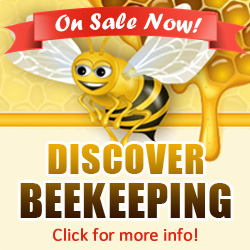So here we are, in the middle of winter and you are thinking there is nothing to do with except cozy up around the fire, hoping everything is okay in the hive! Then there are those beekeepers who don’t want to think about any bee work in January or even February, and their bees may even be dead and they don’t know it. So what should be done in January?
INSPECT YOUR BEES! There are going to be a few days where the temperature will climb up to 50 degrees or above and sunny. TAKE ADVANTAGE OF THE WARM TEMPERATURES AND INSPECT YOUR BEES! That means you will open the hive and look in the center of the brood chamber for brood, or the queen, food, disease, and adult bee population. The two most important things you want to find out are: is the queen alive, and does the colony have adequate food? Many inexperienced beekeepers believe their bees are alive because they see bees flying in and out of the colony on warm days, but there were no bees there when they finally opened their hives on a warm day in April. What they saw flying in and out on warm days in January and February were ROBBER bees, because their bees were dead. Your bees CANNOT be inspected by observing them from the outside of the colony!
Brood rearing normally starts in January and so you need to know what the food supply is like in the hive. Brood rearing requires a huge amount of food, and typically more bees starve to death in February and March than any other time of year. When you check the colony’s food supply in January and you find it to be low, feed 1:1 sugar syrup.
Here’s an interesting video I found on You tube that gives you an idea of what a Canadian beekeeper is doing to over winter his bees:
GET THE QUEEN LAYING! The best time to have your queen stimulated to lay eggs is dependent on what state you live in. For example, nectar flow will begin in Missippi long before it begins to flow in Minnesota. Now, I will give you a timeline in egg-laying versus nectar flow which you can apply to your given location. For example, if your nectar flow yields primarily in late April through May, you must realize that the bees that are going to gather this nectar should have emerged from their cell by about April the 10th, which means the queen had to lay the egg about March the 20th. Don’t lose sight of the fact that there has to be a lot of bees around in early March to warm the brood nest and feed the brood. Queens are stimulated to lay eggs by the collection of pollen and nectar. 1:1 sugar syrup is artificial nectar; a substitute for real nectar. If you deem yourself a skilled beekeeper, start feeding sugar syrup in late January or early February. In any event, get your queen going by beginning the 1:1 feeding no later than March!
Now, since you have checked your hive for health and food supply and taken care of any problems, you can sit back and take a little break. Enjoy a month or two of snow and the slow pace winter affords because sure as warmer weather arrives there will be countless jobs calling for your attention!






Thank You for your help.
I enjoyed the video.
Keep up the good work
Steve
These clips of wintering and pests have been very beneficial for me as a new beekeeper last April. This is my first winter so I will be going out to check for my queens next week. I treated for mites late in the fall. So I hope they are mite free.
Love the newsletter. It’s a hugh help for us beginners. Excellent video’s also, especially this time of year, which is so critical.
Though we do not have winter in the Philippines the video is very educational. Thank You!
Thanks for the newsletter. Great work.Very informative video, although luckily in Malta we don’t get snowy winters.
Eddie: A pre beginner beekeeper 🙂